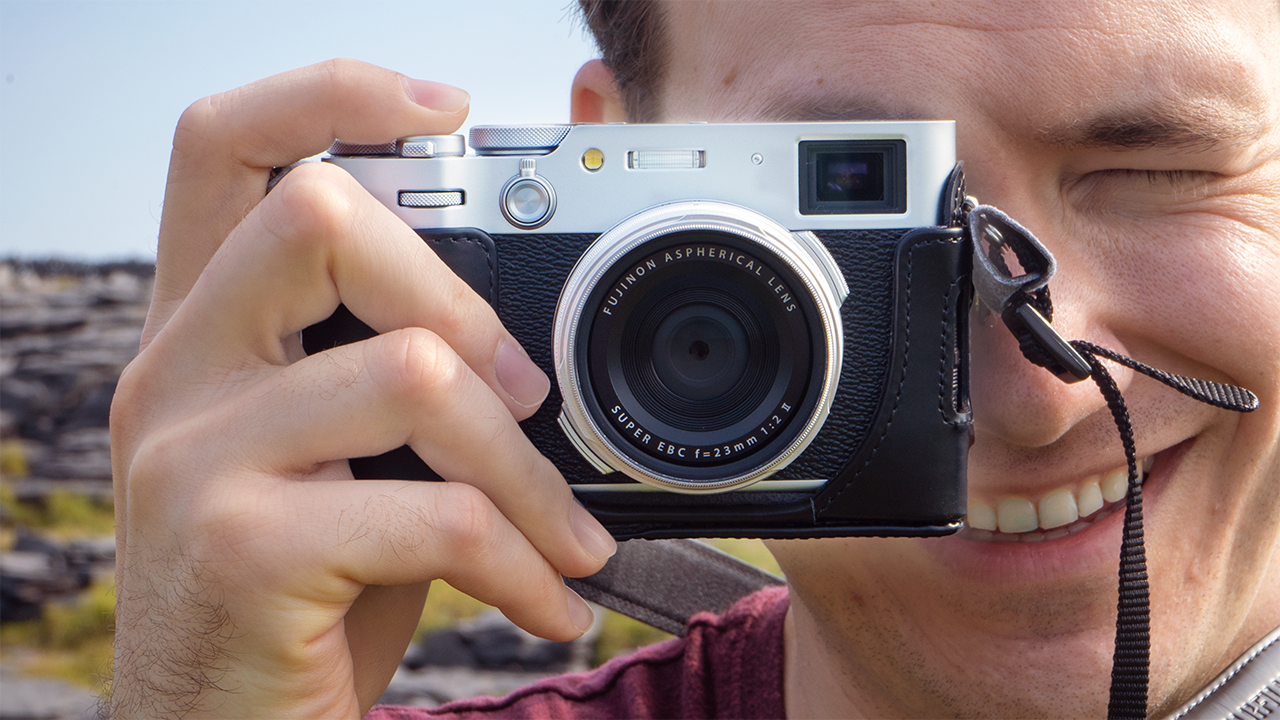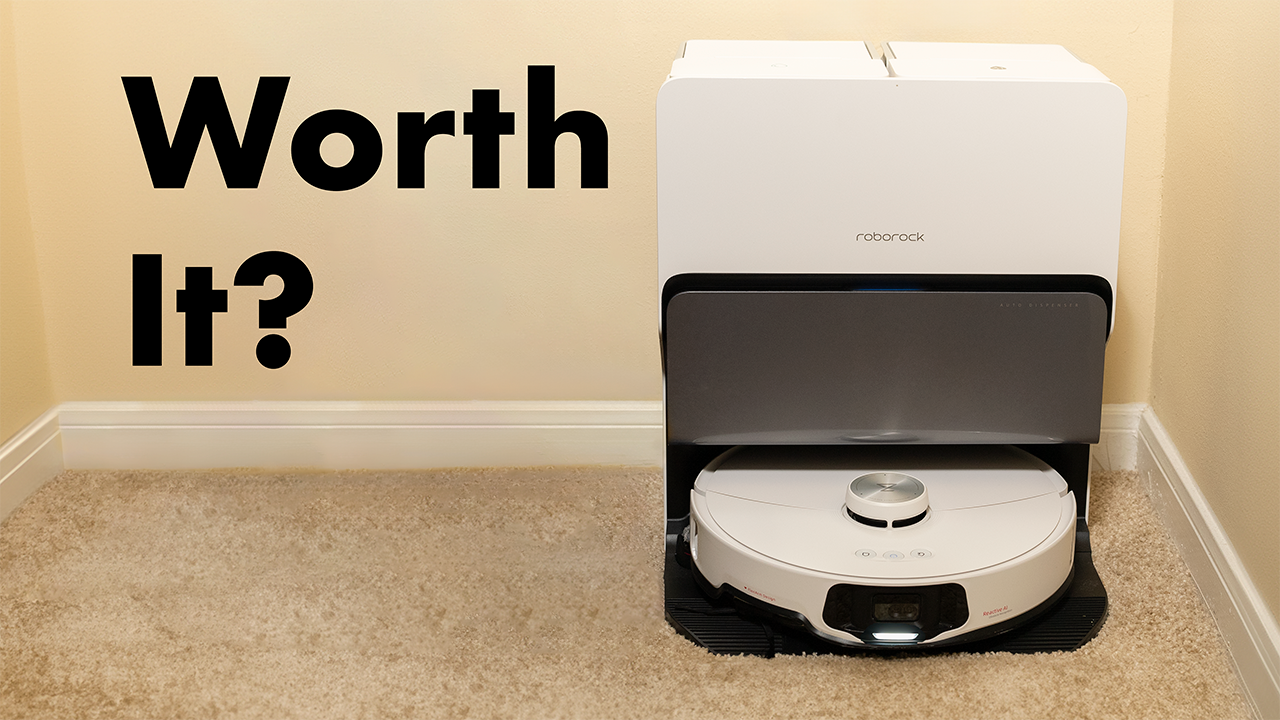Product Links:
Meta Quest 3 (Affiliate Link)
Meta Quest 2 (Affiliate Link)
Meta Quest 3 case (Affiliate Link)
Meta Quest 3 dock (Affiliate Link)
Meta Quest 3 different colored head straps and facial interface (Affiliate Link)
Meta Quest 3 elite strap (Affiliate Link)
View all of our recommended products
Find your Perfect UPLIFT Desk (video sponsor)
Quest 3 – 6 Months Later
It has been 6 months since I bought a Meta Quest 3, and while its novelty has worn off in a similar way to the Quest 2, there’s still something kind of magical about these devices. One of the biggest takeaways I’ve had after 6 months with the Quest 3 is how much more solid of a product it is compared to the Quest 2. It’s more comfortable thanks to a slimmer profile and upgraded materials for the facial interface, and the cooling feels better on this than the Quest 2, though it’s actually slightly heavier at 515 grams compared to the Quest 2’s 503 grams. However, you’d never know it because the weight distribution is more even.
Optics and Displays
One of the standout features of the Quest 3 is its better optics and displays. The screens are not only higher resolution with better colors compared to the Quest 2, but they also feature an entirely new pancake lens design. I cannot stress enough how big of an upgrade these lenses actually are. They just make everything look sharper and clearer, and you don’t have to line up your eyes with this tiny little sweet spot to get a perfectly crisp image.
Full-Color Pass-Through and Boundary Detection
One of the big changes Quest 3 brought to Meta’s headset experience is full-color pass-through, and yes, it is good enough now that you can even read notifications on your phone, look at your smartwatch, or even look at a computer screen all without having to remove the Quest headset. The full-color pass-through makes wearing the headset feel a bit less isolating, and certainly, it’s easier to move around your space, especially when you compare it to the black-and-white-looking infrared image out of the Quest 2’s pass-through. The Quest 3 also improved the way virtual boundaries are handled. Its auto-boundary detection is really fast for room boundaries. It’ll automatically draw a suggested boundary and quickly allow you to adjust it, all without needing to set up the ground level every time, which speeds up the process.
Other Improvements
Another improvement I’ve appreciated 6 months later with the Quest 3 is its sound. While it doesn’t sound fantastic, it does sound noticeably better than the Quest 2 with less distortion. I also like that the glasses spacer is now integrated into the Quest 3’s facial interface compared to the removable one on the Quest 2, which you could easily lose. I also think that Meta did a really good job slimming down the controllers by removing the tracking ring and upgrading their haptics. However, for experiences with fast movements like Beat Saber, I did initially experience tracking accuracy issues, which others seem to have reported as well, but more recently, when I retested this, I didn’t have any issues.
Software and Ecosystem
When you take all of these hardware improvements together, it feels like a third-generation product, meaning that the company fixed most of the issues with the first generation and has built a substantial business and ecosystem around it. That’s how the Quest 3 feels, especially regarding the software experience. There are now so many games and experiences to try out. Unfortunately, most games and experiences don’t have a free trial or demo, so the only way to try them is to actually purchase them, though Meta, thankfully, does have a pretty decent return policy. You can request a refund within 14 days of purchase as long as you haven’t engaged with the content for more than 2 hours. Meta also launched a Quest Plus subscription along with its headset, and this subscription will give you two handpicked titles every month plus a revolving catalog of games you can play instantly, helping you try more experiences with your Quest over time and keeping things feeling fresh.
Favorite Games and Experiences
Speaking of games, here are some I’ve enjoyed over the past 6 months. “Vader Immortal” continues to be a highlight. It was the first immersive experience on the Quest where I really understood how powerful this medium can be for immersive storytelling and game experiences. They feel more real than when playing a computer or console game. You can see how tall or how short characters really are. Darth Vader is really &%$#@& tall! LEGO Bricktales is another standout experience. It presents you with a giant virtual Lego set, and you move around your little Lego brick character to explore new worlds. It’s one of the most compelling augmented reality games I’ve experienced and is quite fun. Some other interesting and notable experiences have been “Nano,” where you’re shrunk down to the microscopic level so you can travel through people’s bodies and investigate a mysterious virus while learning a bit about how cells work. One of my favorite immersive experiences is “I Expect You to Die,” a puzzle-solving game in which you play a spy who’s put in a variety of situations. And there are always multiple ways to solve the puzzle but also multiple ways to end up dead. This game has particularly been fun to play at parties where you can cast your Quest 3’s display to a TV using Google’s Chromecast. You can cast your headset’s feed to the Quest app on an iPhone and AirPlay the iPhone screen to a TV, but it doesn’t look as good and can be kind of laggy.
Graphics and Performance
Now, aside from the improved optics and displays, games look better on the Quest 3 thanks to the improved performance Meta gave it. The Quest 3 features the new Qualcomm Snapdragon XR2 Gen 2 chip, which in games like “Red Matter 2” really shows off what this headset is capable of. You see way more reflections and details, and it overall just looks stunning.
Software Updates and Features
Meta has also improved the software experience of the Quest 3 and the Quest 2, for that matter, thanks to regular software updates. These updates not only include new major features but also performance enhancements like the recent pass-through video upgrade. Meta has also made moving around windows in your environment easier, and its hand tracking is pretty good. And you can now enlarge the size of content screens more easily. However, I haven’t really found myself using this headset to look at a bunch of virtual 2D screens until comfort for long sessions with this headset improves. This is something where I think it actually just looks better in social media ads versus how useful it is in real life.
Immersive 3D Content and Virtual Desktop
The Quest offers free immersive 3D content, though, a viewing experience made specifically for these headsets. There are quite a few videos to choose from, but I haven’t seen anything here that can match Apple’s immersive video format. Though to be fair, both formats feel more like demos than something that will keep you coming back to these headsets repeatedly. And because the Quest 3 has the screen door effect where you can kind of make out pixels, plus the weight of it, I really wouldn’t recommend watching TV shows and movies on it either. And the same is true for virtual desktops. You can connect your computer to the Quest 3 wirelessly via Meta’s Remote Desktop app available for Mac and PC which allows you to see your computer’s entire display virtually, which overall works pretty well. I can see the text clearly and even use multiple screens from my Mac in Horizon Workrooms, which is cool but also, at times, a bit glitchy.
Lying Down Mode and Spatial Videos
A few other updates Meta made over the past 6 months is a lying down mode, which will reorient the display wherever you’re looking when lying down. You can also play spatial videos from an iPhone 15 Pro or Pro Max on the headset, but the videos don’t really look very good on Quest. As I said in my first video on the Vision Pro, I think this format has a lot of promise, but there’s still a long way to go. Just this week, Meta announced the ability to view panoramic photos from an iPhone on the Quest 3. This was one of those “wow” experiences I had when using the Vision Pro for the first time, so I’m glad to see it’ll be available on Quest as well.
Quest Experiences and Applications
Besides games, there are other experiences to try out on the Quest, like fitness apps such as Supernatural or Fit XR. These apps have monthly subscriptions that can help you increase your heart rate, do different workouts, punch 3D virtual objects, and listen to various music tracks. Essentially, these apps gamify cardio and other workouts. I have personally tried both but didn’t find them as compelling as my Apple Fitness Plus workouts on my TV because I’ve mainly been focusing on strength training with weights.
Meta’s Open Approach and Ecosystem
The last big advantage of the Quest 3 and Quest line, in general, is Meta’s approach to their devices and ecosystem. Meta is taking a much more open approach to its headsets compared to Apple’s closed ecosystem model, and Meta’s approach has a lot of benefits. Just last week, Meta announced they’re opening up their OS, which is partially based on Android, to other hardware partners like Lenovo, Microsoft, and Asus. They’re also opening up the Quest Store to Steam and Xbox Game Pass. This will result in even more games and experiences that you can play on Quest and a larger variety of hardware you can choose from. Today, you can already sideload apps onto the Quest through apps like SideQuest and use Steam Link to connect to your gaming PC to play higher-end games with better graphics.
Downsides of Quest 3
That’s all the good stuff with the Quest 3, but what about the downsides? The first one I found is that this headset can sometimes feel glitchy. When you look at a virtual window with pass-through mode, that window can slightly shift or jump, and that can cause disorientation. The same thing happens if you have some virtual windows open and start walking around; you’ll get some stuttering, which can lead to motion sickness. Motion sickness can be experienced in any kind of headset like this, especially with experiences where you’re moving a character or just the view, but you yourself physically are not moving. Thankfully, Meta has a rating system’ll tell you how comfortable a game or experience will be to play regarding motion sickness. Eye strain is another discomfort you’ll want to watch out for when using a headset like this. I’ve noticed that when you put one of these on and have a screen close up to your eye, you’ll have a tendency to blink less, and I especially noticed that when wearing contacts.
Now, another issue I’ve had with this headset over the past 6 months is that, on occasion, this headset will just constantly disconnect from Wi-Fi. I’ll hard reboot the headset, which temporarily fixes things, but then I’ll run into the same issue all over again. It could just be my router, but given that it’s the same router I used with the Quest 2 without any issue, I’m inclined to think it’s more likely an issue with the Quest 3, and others have reported similar issues as well.
Another big downside with Quest is authentication into the headset. Unfortunately, there’s no iris scanner or fingerprint sensor on the top for a more seamless authentication experience. You’re stuck using a password unlock, which I find to be a real pain to use. I ended up just turning this feature off entirely.
The last downside is repairability. Even though the Quest 3 is a cutting-edge piece of hardware, I’d like Meta to at least make the battery user-replaceable.
Recommendations
When you combine all of the new hardware and software features with Meta’s more open operating model, the Quest 3 and its ecosystem start to look compelling. But are there enough good games and experiences for you to want to keep putting the Quest 3 on your face? Well, at $299, the Quest 2 made it easier to say yes to that question, and that was a device I found myself using pretty much every week for the first year I owned one. But then, as the pandemic waned, I used it less. With the Quest 3, even though it can do more, I personally haven’t found myself using it as much as I did the Quest 2, partially because Beat Saber got stale for me. The games on the Quest I need to try out aren’t typically ones I found myself drawn to spending my time on every week over my gaming PC. Though to be fair, I’m not a very broad gamer. I tend to find a few games and stick to those, and buy hardware specifically for those games, so some of this might just be a “me” problem. Let me know in the comments what your experience with Quest and other headsets has been, and if you have a Quest 3, what have you thought of it so far?
So, is it worth it? In general, the Quest 3 is a great device that I can confidently recommend for specific use cases: for those who want a great gaming device that can put them inside the game, or those who want immersive fitness experiences, as well as those who want the best optics and gaming experience in any Quest headset to date. And for Quest 2 users who use their device regularly, I do think Meta has packed enough upgrades into the Quest 3 to make it worth it to sell your Quest 2 and upgrade to the three.
The Quest 3 retails for $499, and I’ve left links below to check its price compared to the Quest 2 as well as links to the Quest 3 accessories, which include multicolored facial interfaces. And yes, Quests do have multi-user support, a nice carrying case, and a charging dock, though the dock feels a bit pricey at $129.
Now, what about how it compares to the Vision Pro? Is the Quest 3 actually the better product? Well, I did a video on that topic, which you can watch here:
And if you’re trying to figure out if you want to buy the Quest 2 or Quest 3, how they compare, or you just want to see my entire 6 months later review of the Quest 2, you can get to those videos by clicking here:



